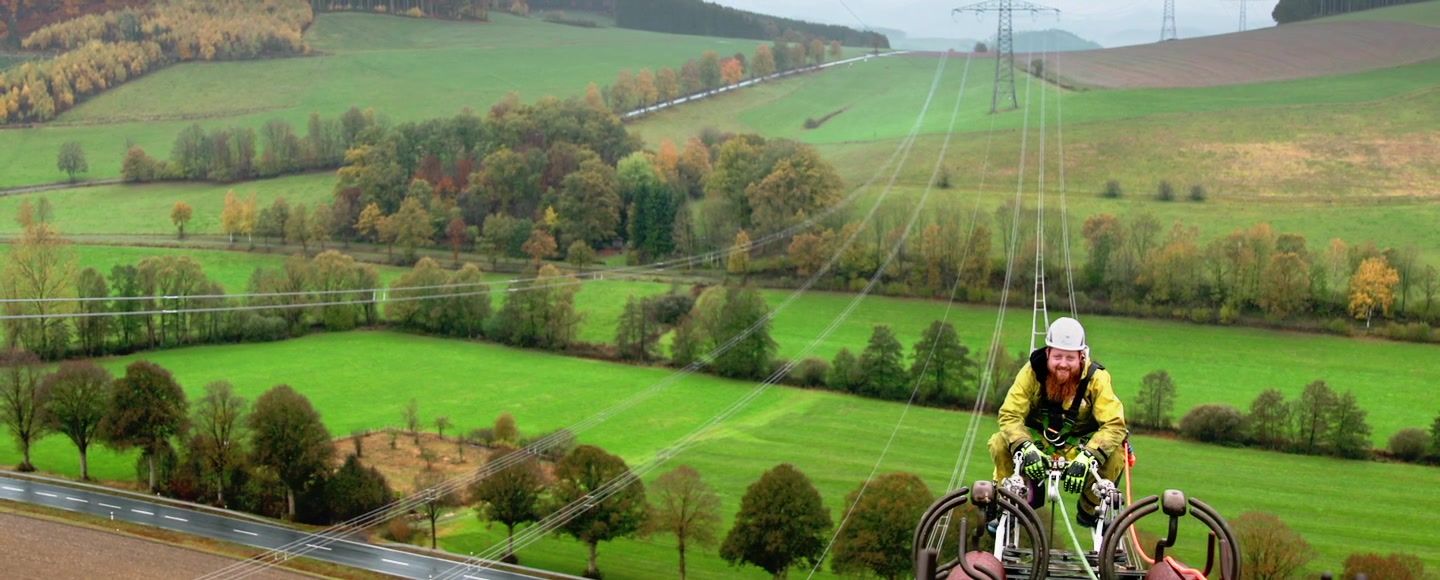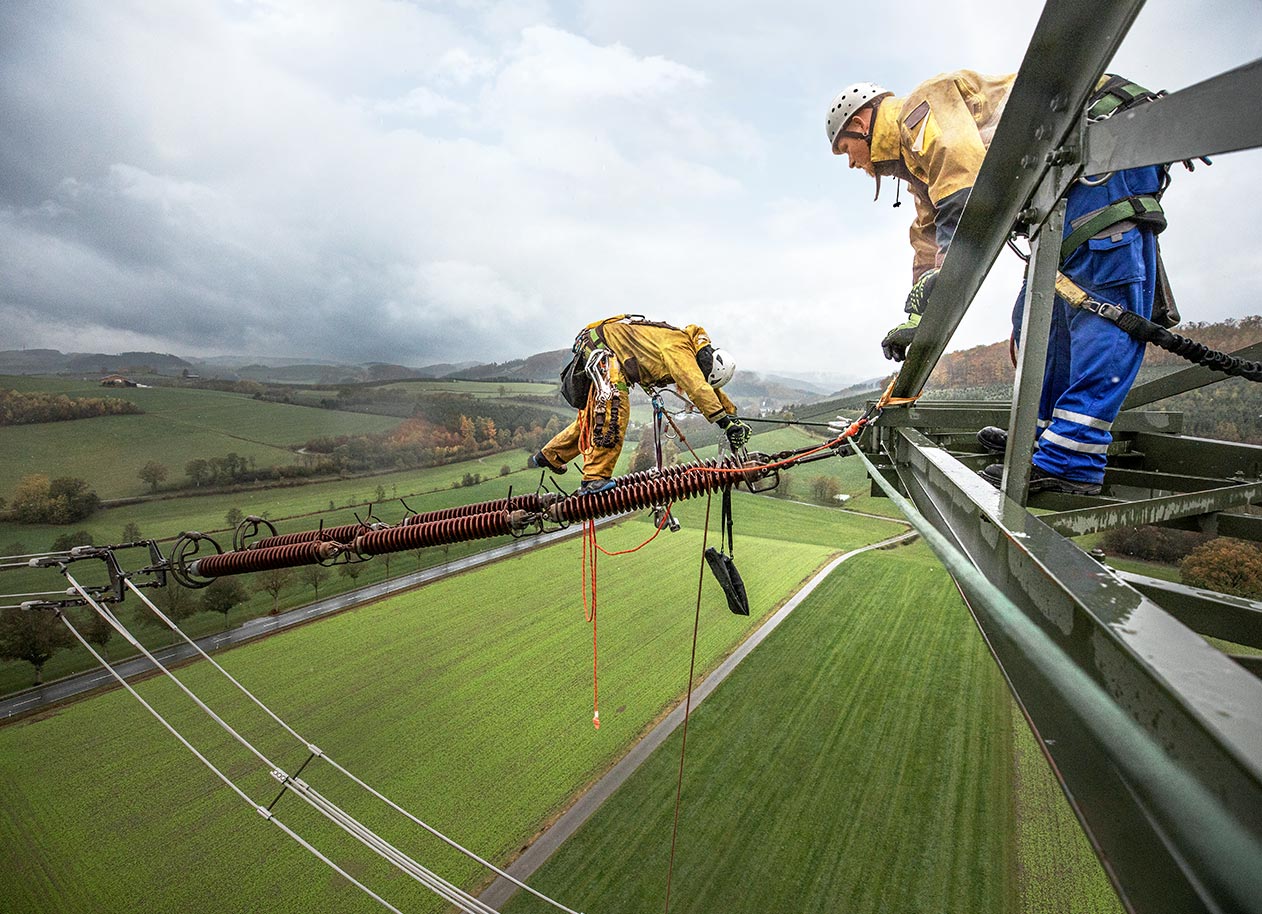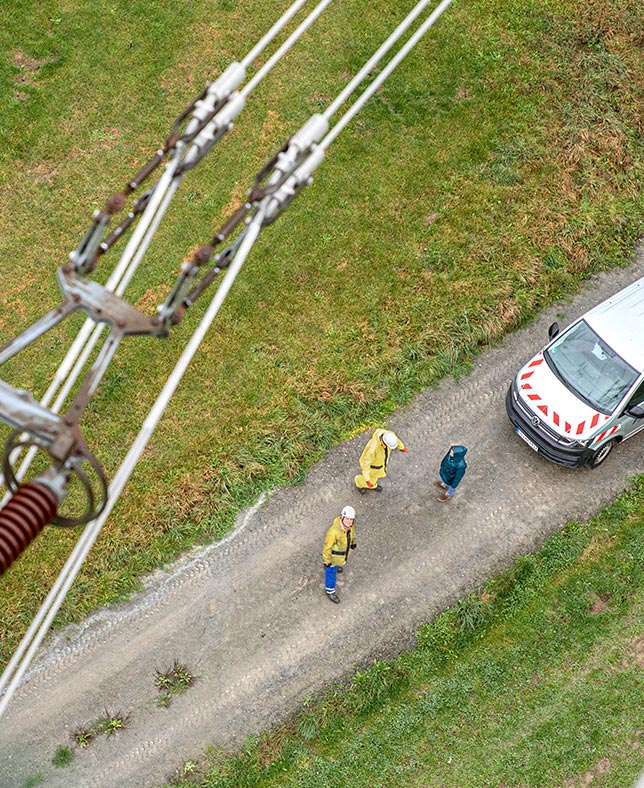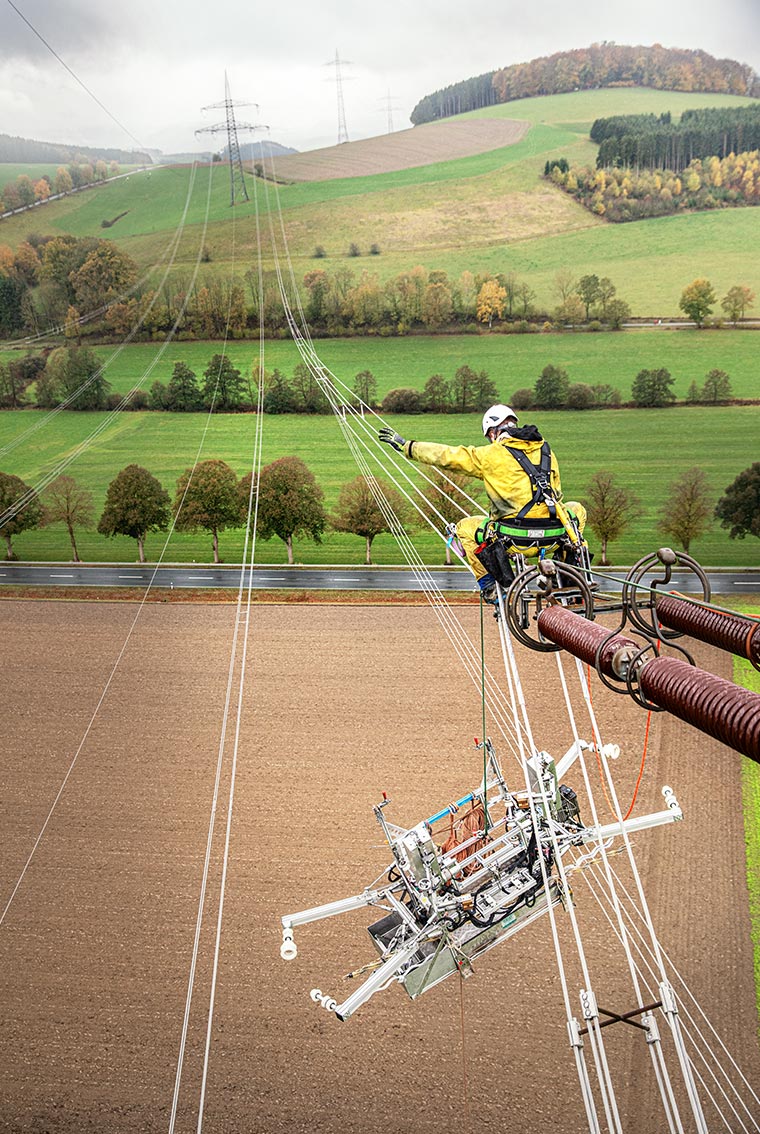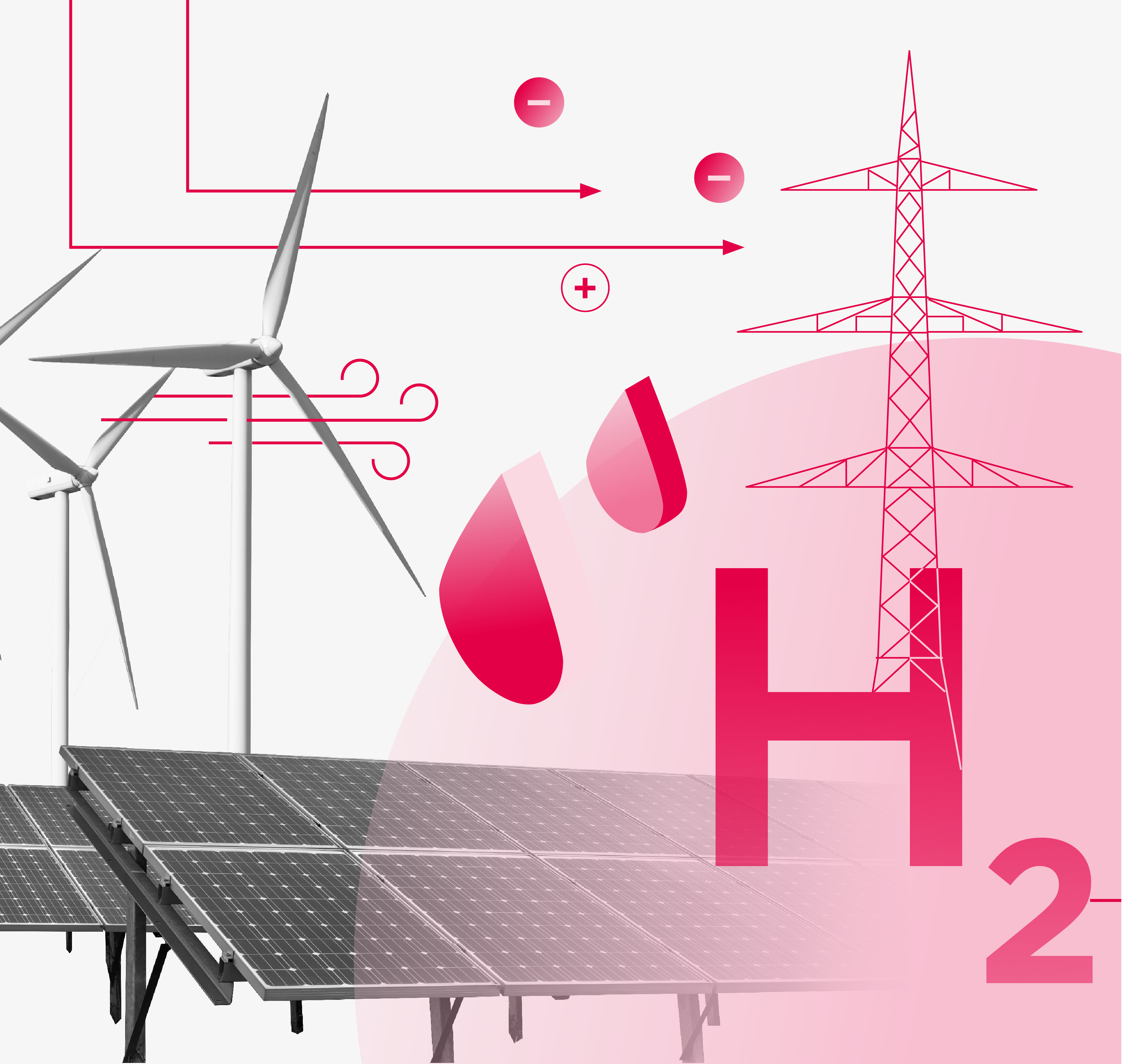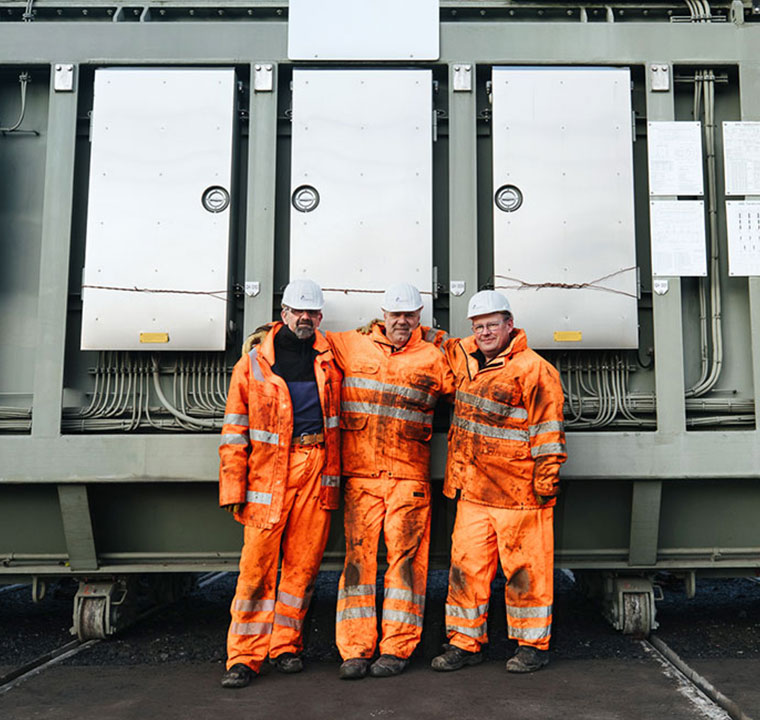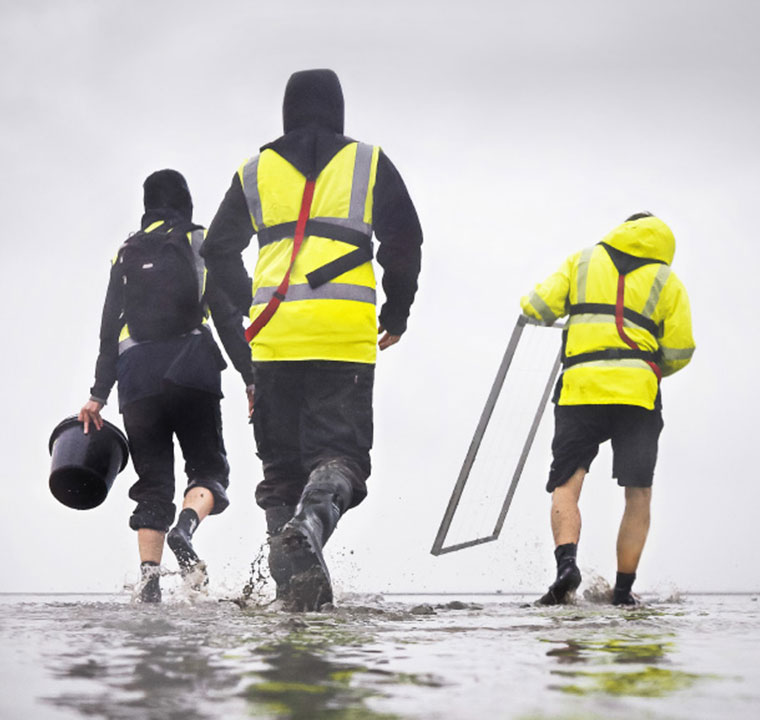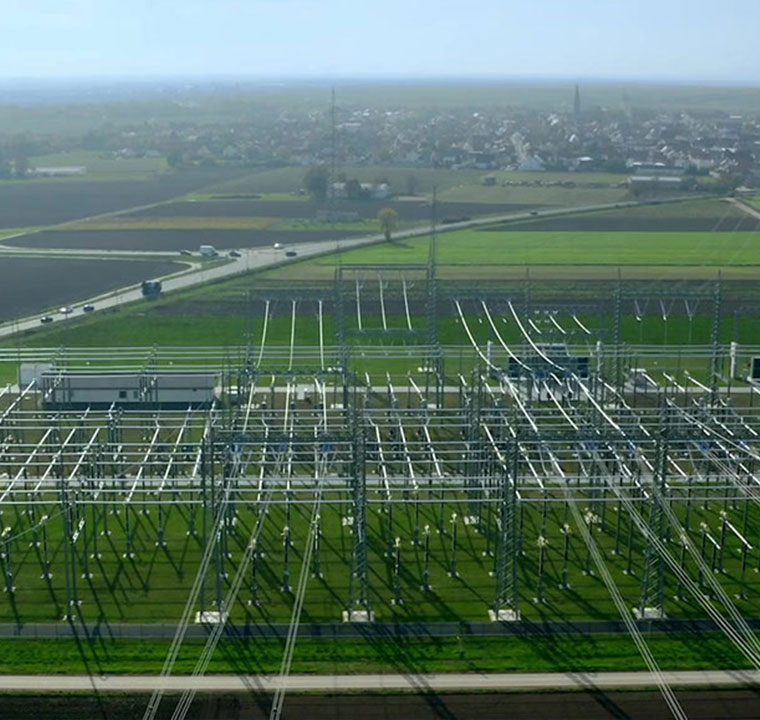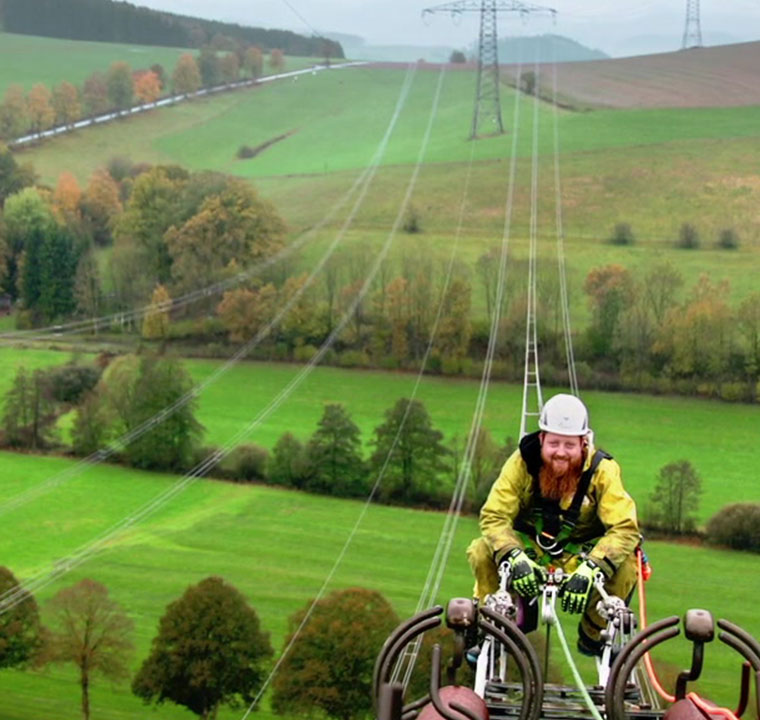We need to be prepared at all times
Maintaining the power grid network has top priority at Amprion. After all, the power supply of many millions of people stands or falls with the reliability of grid operation. “Our network is robust. Overall, it suffers from very few faults, but despite this, we need to be prepared at all times,” says Hans Brinkers, who is assignment manager. The native Emslander knows his way around. He has been working as an overhead linesman for 32 years. On this autumn morning, however, he and his colleague Klaus Rothlübbers remain on the ground. It’s Jonas-Daniel Glane and Frank Hölscher who will climb the pylon. That’s what they have agreed.
The men put on rain gear, helmets and gloves, then go off to set things up. They move the van and trailer, on which a motorised cable winch is mounted, into the right position. They remove around 100 metres of lifting rope and lay it down in front of the pylon along with other materials. Later, they’ll hoist most of these materials up with the winch. This includes the 200-kilogram cable trolley, a type of cradle they affectionately call “the little chair”. This specialist piece of equipment lets you travel along the overhead cables way above ground level.
